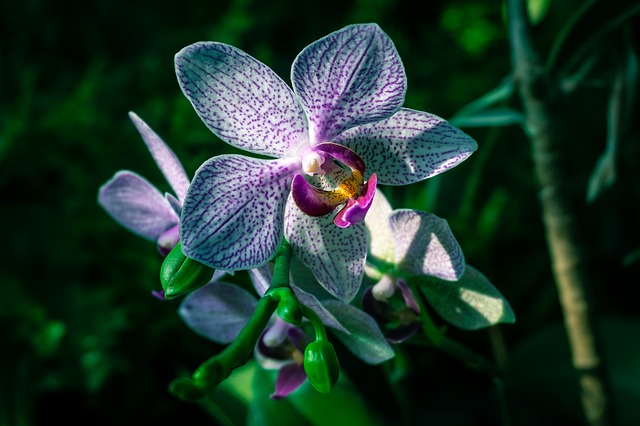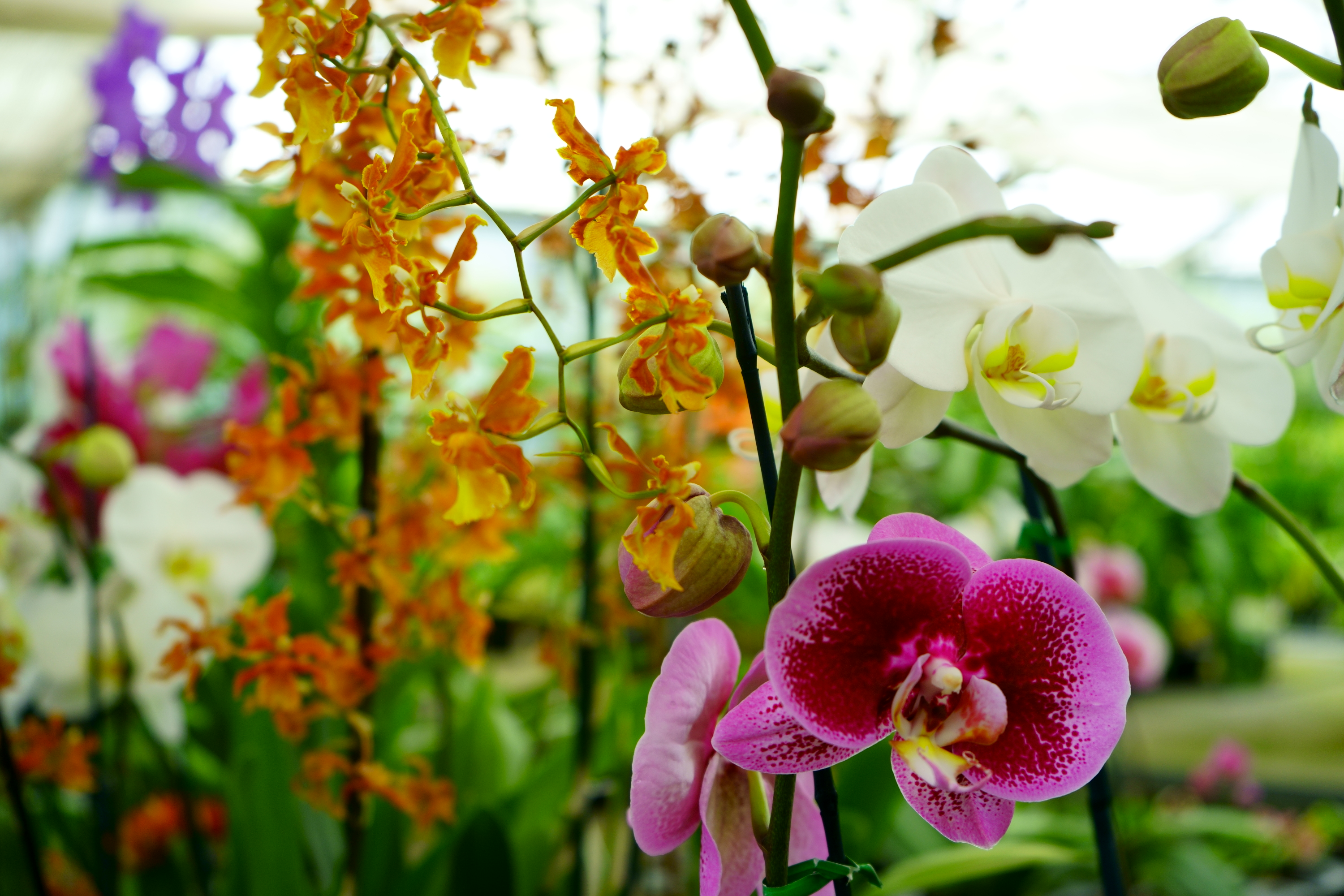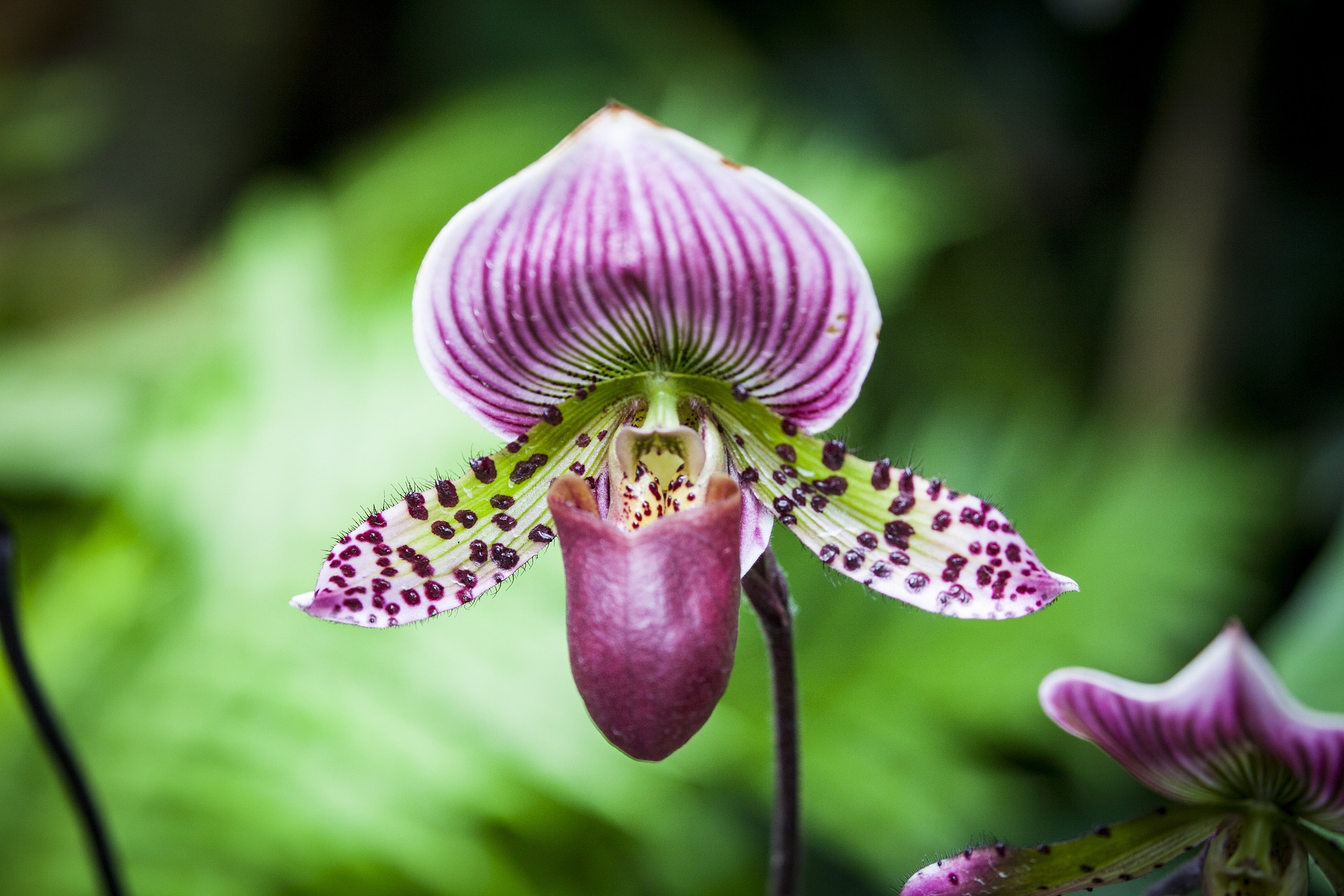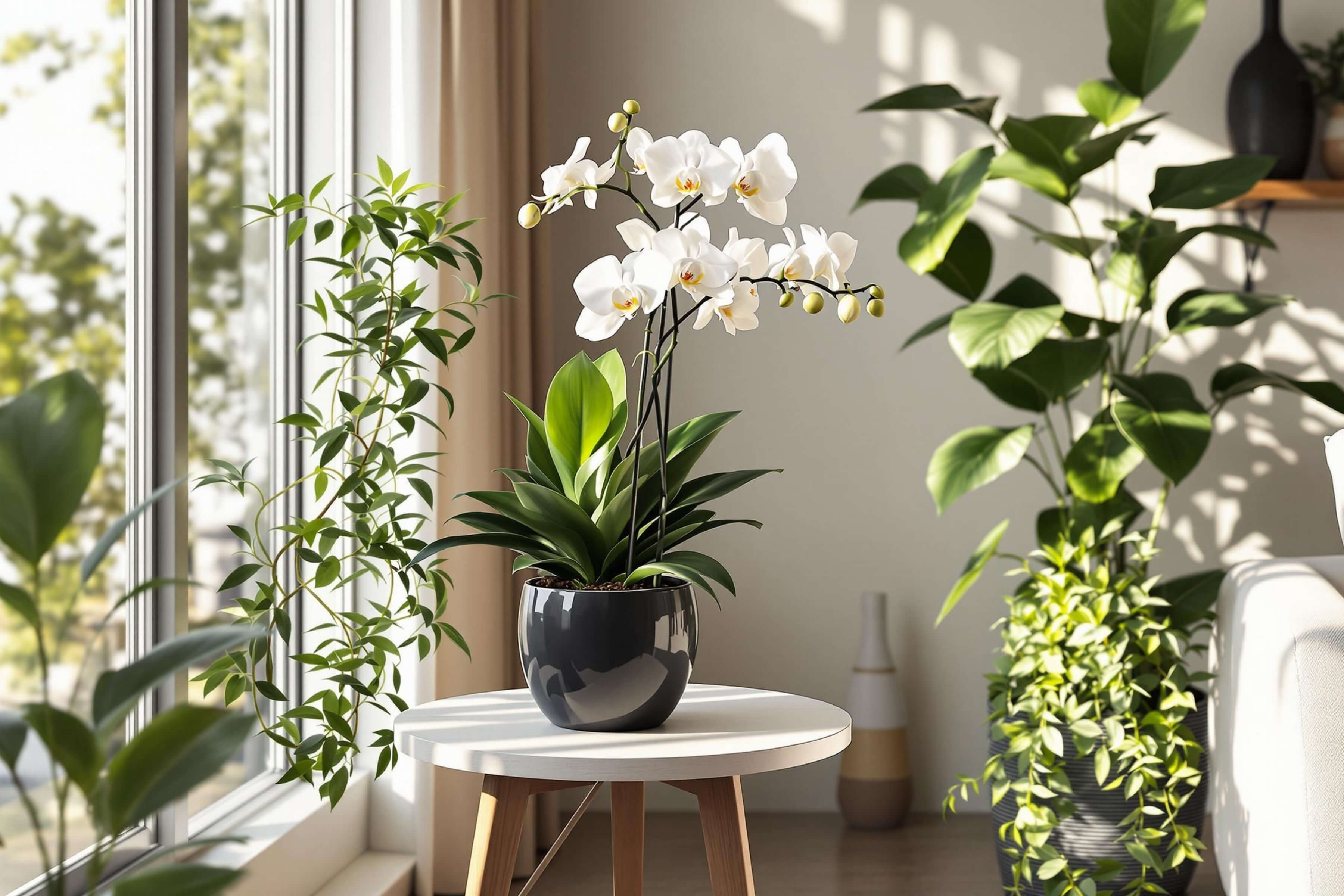Orchid Care Repotting-A Guide to Repotting Orchids
Orchid care repotting is something that needs to be addressed on an occasional basis. In general this will have to be done once every year or two depending on the potting media being used, the growth of the orchid, or a disease or pest problem that needs to be dealt with. It is a good idea to repot new orchids in order to check the roots and media. When you purchase a new orchid, it is generally best to wait until the orchid has finished flowering before repotting your orchid, unless you spot a problem which requires immediate attention. Repotting an orchid when it is in flower can cause the flowers to drop due to shock, and since we often have to wait a year for the next bloom, it is best to enjoy your orchid flowers before repotting. The following instructions are a guide to Phalaenopsis and Vanda orchid repotting.
Orchid care repotting essentials
There are just a few essentials to keep in mind that will make your orchid care repotting go smoothly. The first thing is to water your orchid liberally about two days before you plan to repot. This will make the roots limber, flexible, easier to work with and will make the process of removing the old media go much smoother. Depending on the current pot that the orchid is housed in, give the pot a squeeze to start loosening the media or a couple of taps to start separating any roots or media from the edge of the pot. When removing the orchid from its container, grab the orchid around the base and close to where the roots and stem meet underneath the base leaves. Avoid pulling on the leaves. After removing the orchid from the pot, clean off all the old media, removing most of it carefully by hand and then rinsing off any remaining debris under a sink faucet or spray nozzle if you have one.

Prune old, soft, and decayed roots.
After we have cleaned up the orchid roots, the next thing to do is to inspect for dead or decaying roots. Sterilize the blades on the pruning shears with alcohol or fire before pruning your roots to avoid any possible disease or contamination from other plants. Look for any papery, soft mushy roots and cut them back to where the roots feel solid when you hold them between your thumb and index finger. Viable Vanda and Phalaenopsis roots will be green and feel solid when you give them a squeeze. Cut away all dried, withered and papery feeling roots. Do not cut into any roots where they are solid as this could cause damage to your orchid.
Orchid care repotting-Container size
The first thing that we should consider when repotting our orchid is the size of the pot. Most orchids will be grown in either 3", 5", or 7" pots. Choosing a new pot will depend mostly on the current the size of the roots and how much you expect they may grow in the next two years. If your orchid has a very shallow root system with very small roots, a 3" pot may be the best choice, and with more developed roots, a 5" or 7" pot will be the best choice. Many orchid growers like to use clear plastic pots so that they can observe the roots, but that is an individual choice, there are many potting solutions for orchids.
Orchid care repotting-Growing medium
Most orchids are grown in either fir or pine bark, sphagnum moss, a combination of wood bark and sphagnum moss, or LECA (lightweight expanded clay aggreagate). Leca is generally used when using self watering potting systems. The choice of growing medium is dependent on a number of factors. This can range from the size or species of the orchid to the environmental conditions that you are growing your orchid in and sometimes you will need to adjust or change the growing medium accordingly. Orchids that like more water than others and younger orchids with a less developed root system may be best potted in sphagnum moss as it retains more water. Many Phalaenopsis and Vanda will do very well in a fir or pine bark medium. Sphagnum moss can be incorporated and mixed into the bark if your environmental conditions are dry and your orchids are drying out fast. Lastly, if you are using self watering pots, LECA is the medium of choice to use for our orchid care repotting. LECA will not decompose, and has good capillary wicking action to distribute moisture through the container and at the same time allowing a lot of fresh airflow that orchid roots love.


